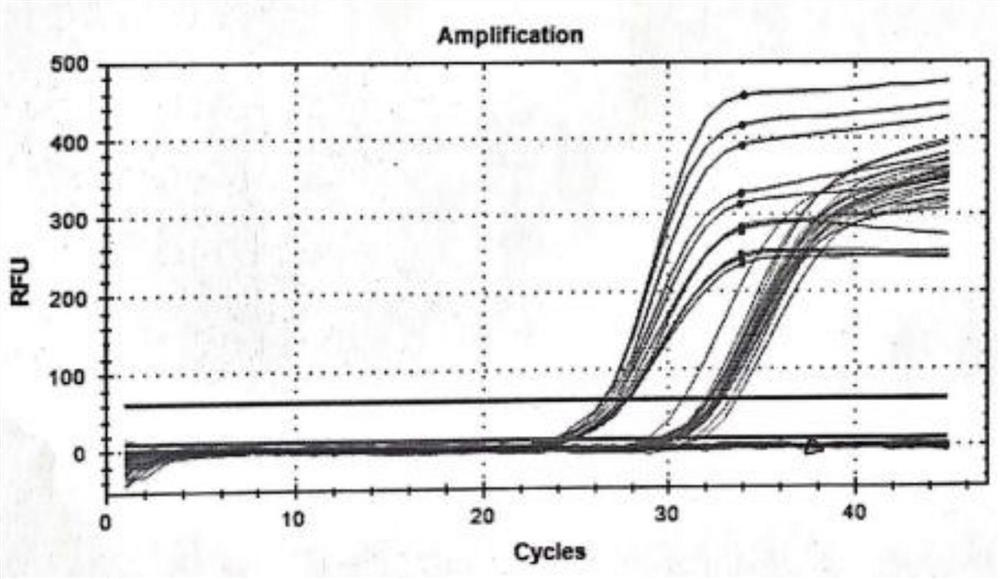Sex identification method for mammalian embryo
An identification method, mammalian technology, applied in the determination/inspection of microorganisms, biochemical equipment and methods, DNA/RNA fragments, etc., can solve the problems of embryo damage, detection method can only detect the end point, and the identification effect is not ideal, etc. Achieve the effects of simple operation, high identification efficiency and accuracy, and increased cost
- Summary
- Abstract
- Description
- Claims
- Application Information
AI Technical Summary
Problems solved by technology
Method used
Image
Examples
preparation example Construction
[0031] The FISH method mainly includes three parts: preparation of fluorescein probe, denaturation and hybridization of probe and target DNA, and observation and identification. The probe is first combined with the reporter molecule, and after hybridization, the fluorescent dye is connected to the immunocytochemical process to generate fluorescence. This method can be hybridized and identified in the interphase and metaphase of cell division. Although this method is specific, efficient and has a low error rate, it does not It takes a long time, has strict requirements on reagents, and high identification costs, so it is difficult to apply in production practice.
[0032] According to the characteristics of DNA, the PCR method is to add appropriate amount of buffer, template DNA, 4 kinds of deoxygenated mononucleotide (d NTP) solutions, heat-resistant DNA polymerase, Mg2+ and 1 pair of synthetic primers into microcentrifuge tubes. Use DNA in vitro at 90-95°C to dehelicate, dena...
Embodiment 1
[0051] The technical scheme of the present embodiment is:
[0052] (1) Acquisition of embryos: Sex identification can be carried out for embryos produced by live embryo collection or in vitro fertilization, as well as frozen embryos.
[0053] (2) Obtaining the genomic DNA of embryonic cells.
[0054] (3) Design and synthesis of primers and probes.
[0055] Wherein, the male-specific gene primer sequence is:
[0056] ① Upstream 5'-CTATACACCGAGACAAATACCCG-3';
[0057] ② Downstream 5'-AATCGTCCCTGTATGTGAAGG-3'.
[0058] The male-specific gene Probe is:
[0059] FAM-AAGAGGCCACAGAAATCCCTTGCT-MGB.
[0060] Internal reference gene primer sequence: ①upstream 5'-GGTCCACATGGCCTCCAAG-3'; ②downstream 5'-TCCCTTTCCTCAGGGCCTT-3'.
[0061] (4) QPCR reaction: during PCR amplification, a specific fluorescent probe is added while adding a pair of primers;
[0062] PCR reaction system 10 μL: 5 μL of 2×S6 Probe qPCR Mix, 0.2 μL of upstream and downstream primers, 0.1 μL of Probe, 1 μL of DNA...
PUM
 Login to View More
Login to View More Abstract
Description
Claims
Application Information
 Login to View More
Login to View More - R&D
- Intellectual Property
- Life Sciences
- Materials
- Tech Scout
- Unparalleled Data Quality
- Higher Quality Content
- 60% Fewer Hallucinations
Browse by: Latest US Patents, China's latest patents, Technical Efficacy Thesaurus, Application Domain, Technology Topic, Popular Technical Reports.
© 2025 PatSnap. All rights reserved.Legal|Privacy policy|Modern Slavery Act Transparency Statement|Sitemap|About US| Contact US: help@patsnap.com


